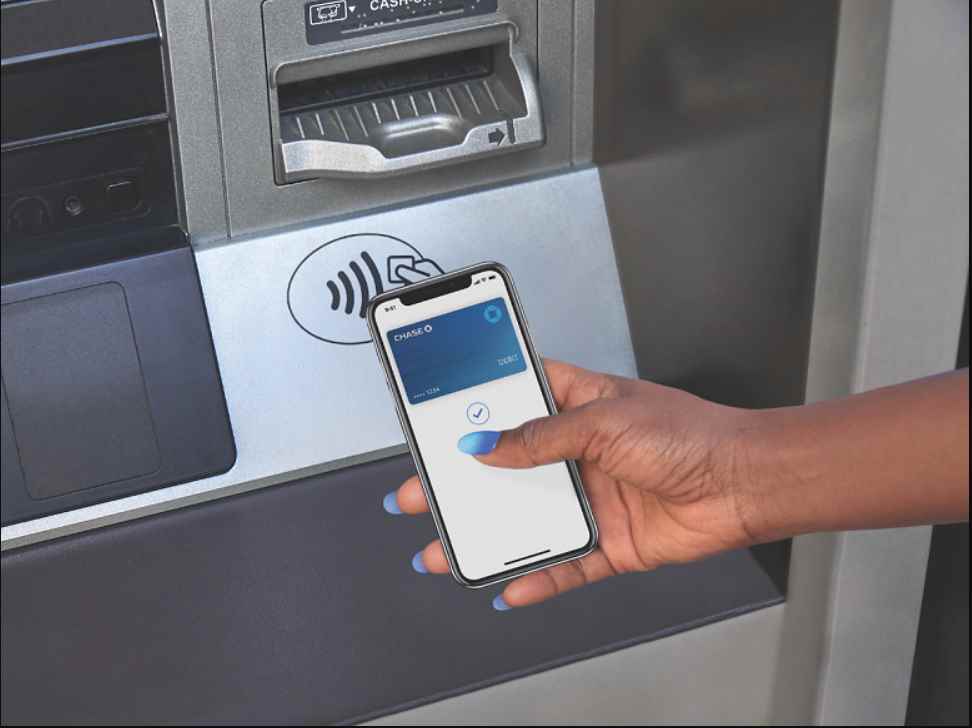ATMs provide a high level of convenience; yet, they have also been a traditional target for robbers. Some people will employ skimmers to get your account number, while others may lurk nearby in order to rob consumers. If you utilize the “tap” feature on your debit card, you should exercise caution since there is a new kind of ATM fraud that has just emerged. Nevertheless, some clients of Chase Bank have reported that their money was stolen using the tap function in conjunction with certain common adhesive.

Pamela Bongiorno described to ABC7 News how she fell victim to a fraud at the ATM in question. She said, “So I was utilizing the ATM machine that was located on the right hand side.” “My boyfriend was here, and so was the person who was standing next to him. I put my card in the slot, but it didn’t work.
Then, a guy who was waiting in line gave some words of wisdom.
Bongiorno responded with the following: “Well, if you had a chip in your card, you could touch it.”
As a result, Bongiorno used her card. This time it was successful. She collected her money, thanked the guy for his assistance, and then left.
She continued, “And then the following morning I check at my bank account…” after making this statement.
Bongiorno was taken aback when she checked her bank account and saw that it had been debited a total of nine hundred and forty dollars.
She told her spouse, “That man conned me last night.” “I stated to my partner, ‘That person fooled me,'” she added.
Rob Bell was victimized in the exact same manner at the same bank machine. A guy moved in closer when the card reader didn’t operate properly.
“I didn’t think anything of it; I just assumed he was using the ATM,” said Bell. “I didn’t believe anything would come of it.” “There seems to be an issue with the operation of the slot. It is imperative that you make advantage of the tap function.'”
Hence, Bell swiped his card, got his money, and left the establishment. After some time, he discovered that $560 had been stolen from two accounts.
At that particular ATM, Justin Sindelar withdrew forty dollars by tapping his Apple watch.
Subsequently, he discovered a string of five further withdrawals, bringing the total to $960.
He paused for a while before responding, “Wait a second, I can assure you that I did not remove that much money.” “I believe someone approached the ATM immediately after I used it…”
The victims filed complaints with the management of the bank.
“‘I’ve reported this to the police, and it’s occurring all the way up and down Mission Street,'” Bongiorno said that someone had informed her.
The manager explained to Bongiorno how the scheme works, and he said that it begins with glue.
“According to what she told me, they inserted adhesive into the card readers of the automated teller machines. Hence, you are unable to make use of your card,” she said.
Customers instead touch their credit card, and here’s where the gimmick comes in: If the consumer does not proactively log out of their account after tapping, the account will stay open for more transactions.
There are some clients who are unaware of this fact.
But fraudsters do.
They wait for the victim to depart, at which point they stroll over to the ATM and continue taking money out of the account.
Each of the three victims reported the fraudulent activity to Chase Bank. All three were refused. The consumers, according to the bank, gave their permission for such withdrawals.
Sindelar said, “And that is very definitely not the case.”
“I said, ‘This is really absurd,'” Bongiorno stated. “Why on earth would I go through with four different transactions in a row? Right?”
Bell suggested that they display a photograph of the person who was responsible for the incident.
According to those who were victimized, Chase did not analyze security videos since the sums involved were less than $5,000.
Hence, Bongiorno submitted a second claim.
And again, and again. Finally, Chase was able to replenish her money.
In addition, as a result of our inquiry, the bank decided to reimburse Sindelar and Bell.
While using an ATM, Chase advised customers to exercise caution in the protection of their personal identification numbers (PINs) and to ensure that they have properly logged out of their accounts.
Bongiorno made the following statement: “I will never use that small tap feature again.”
Each transaction needs the entry of a PIN, which the criminals had presumably recorded, but Chase could not explain why several withdrawals did not raise a fraud alert or why the bank did not check security footage. Always remember to protect the keypad and log out before you step away from it.
Information security specialist, currently working as risk infrastructure specialist & investigator.
15 years of experience in risk and control process, security audit support, business continuity design and support, workgroup management and information security standards.
